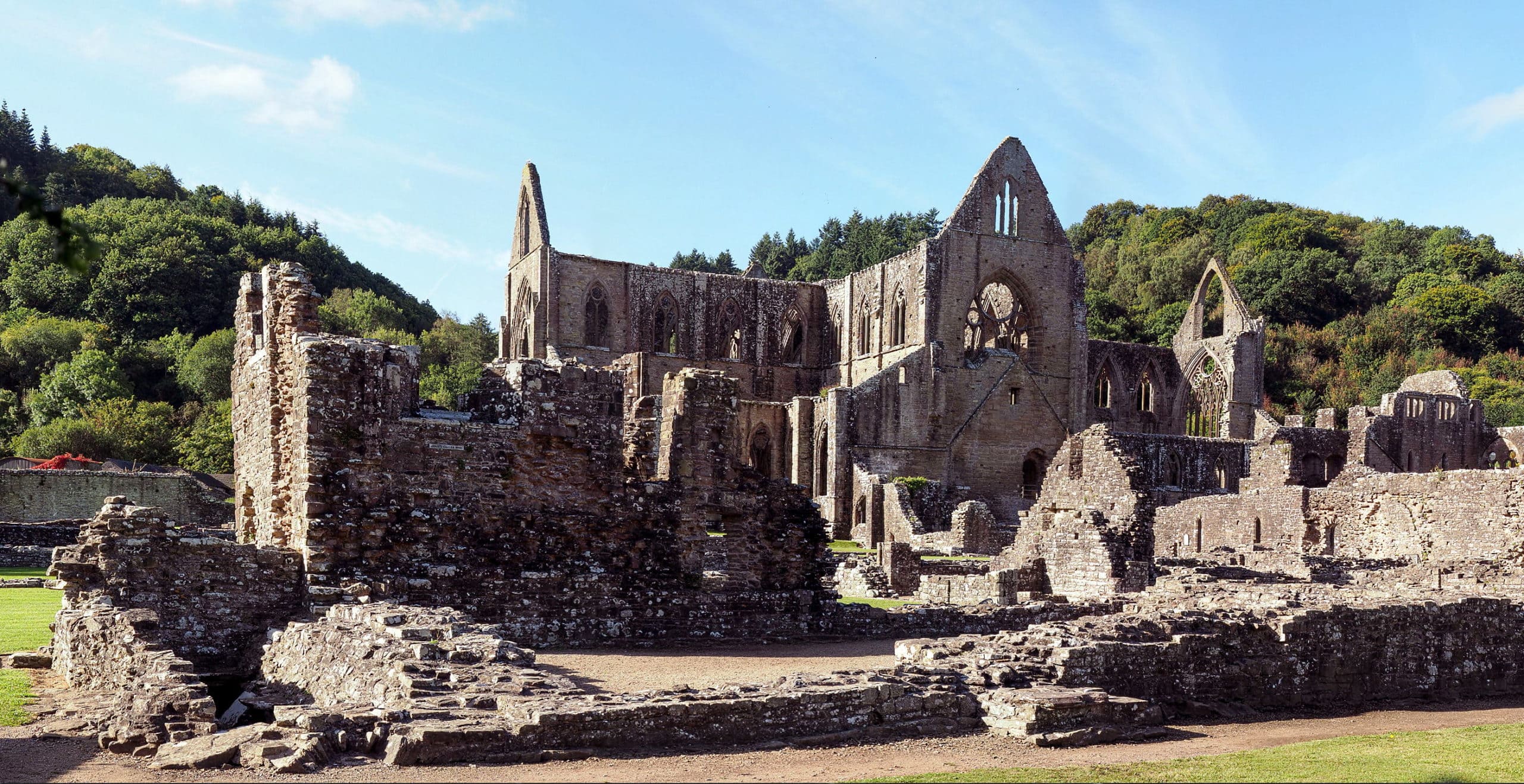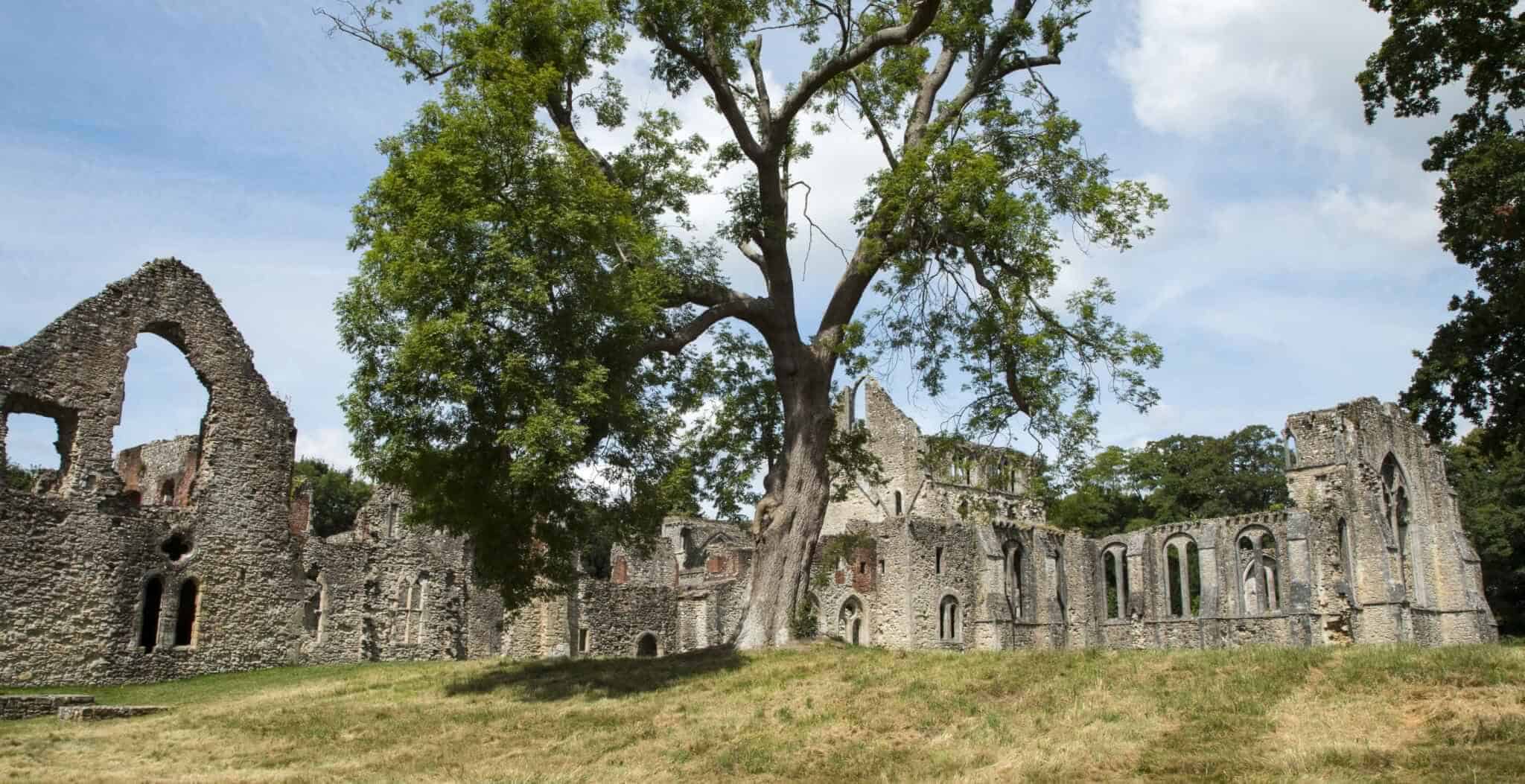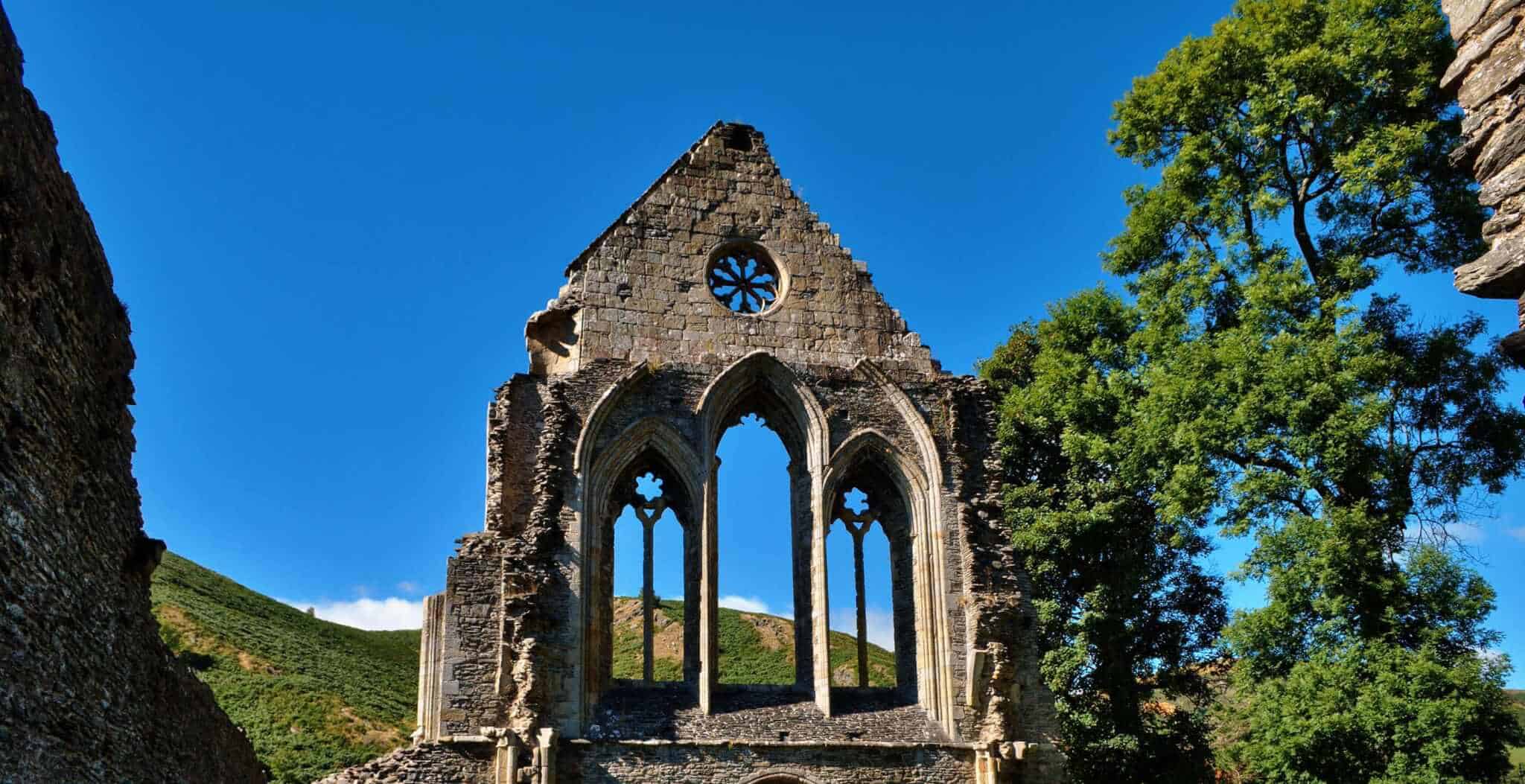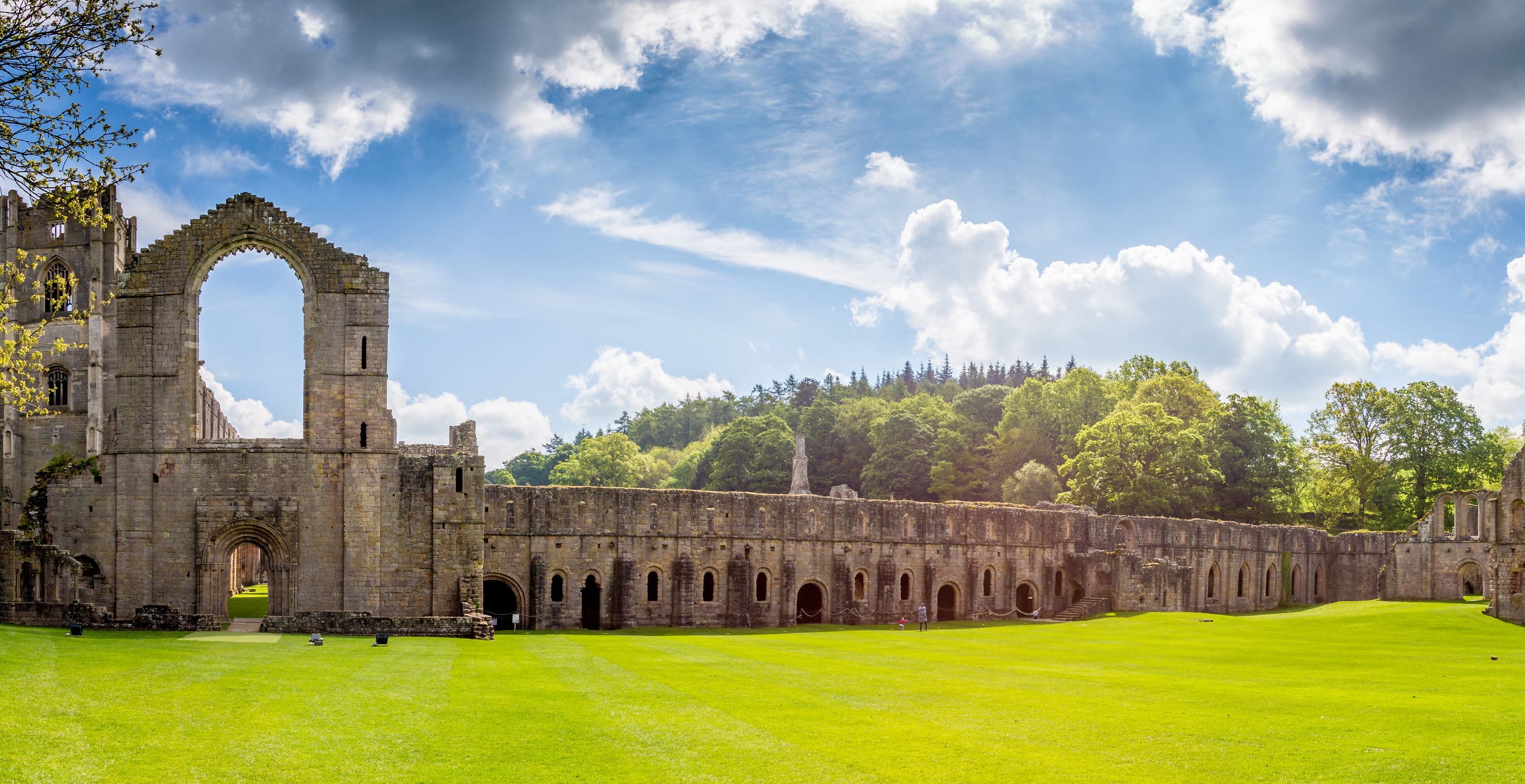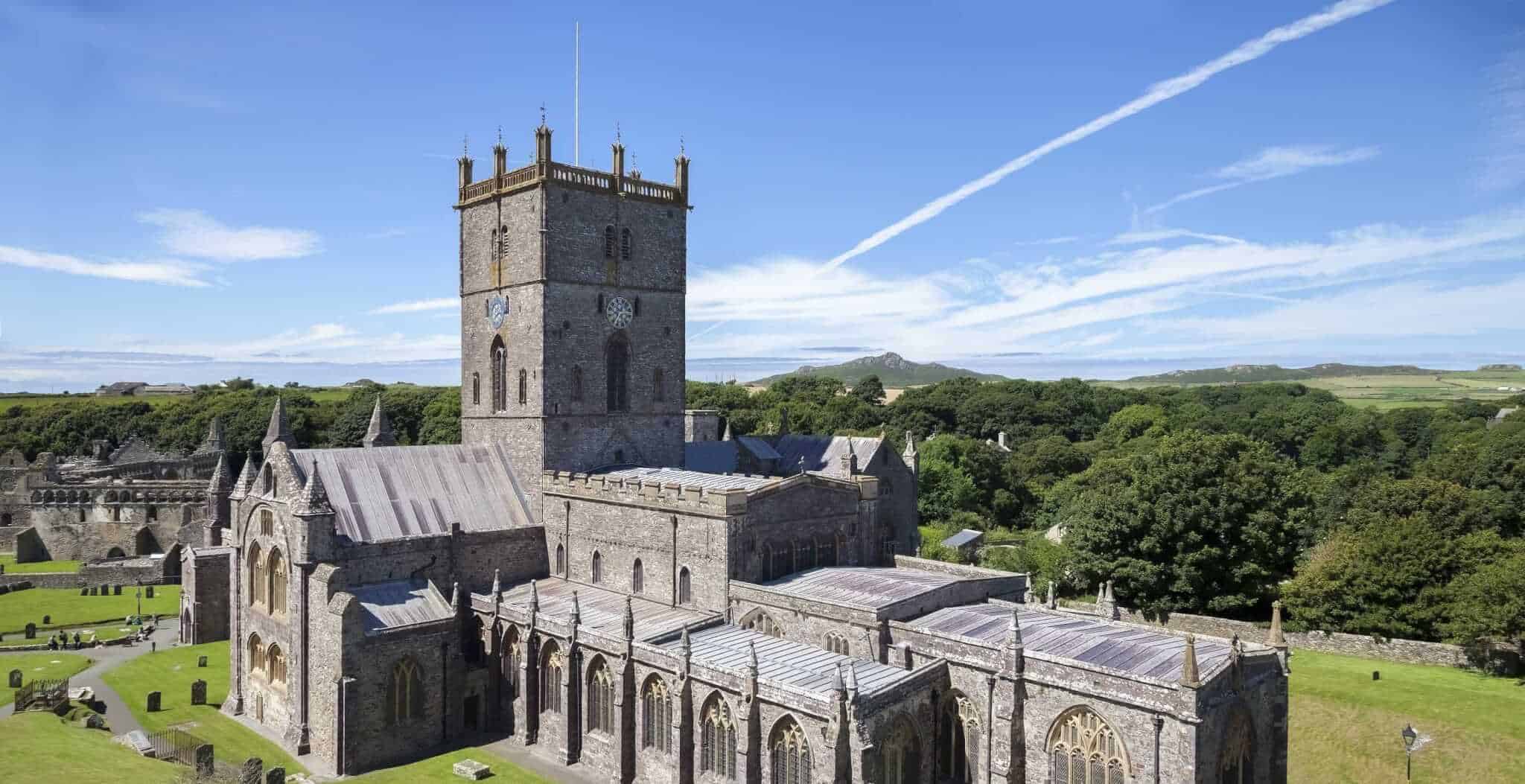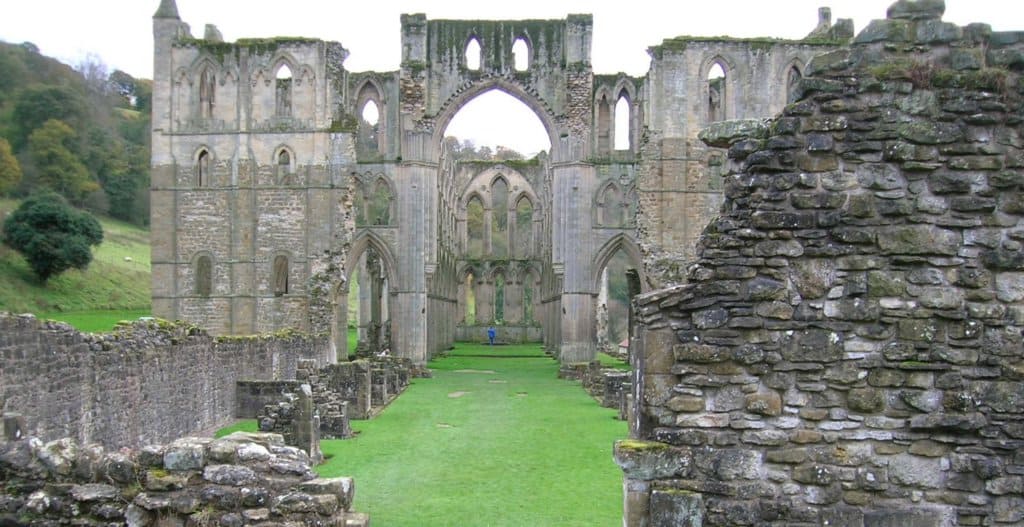First daughter of Waverley Abbey in Surrey and hence second Cistercian Abbey in Britain, Tintern was founded in 1131. Set deep in a gorge of the River Wye its medieval history was mainly uneventful. After its surrender in 1536 and acquisition by the Somerset family (later the Dukes of Beaufort) the industrial potential of the Abbey’s vicinity was untapped – the Wye providing water for power and transportation, the forest wood for charcoal, the cliffs lime. By 1556 iron wire was being manufactured at the site and in 1607 the first blast furnace opened producing some of the ‘toughest iron in the kingdom’. This was a prelude, however, to its most enduring chapter – romantic ruin, inspiration for myriads of poets and painters.
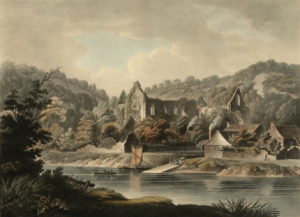 The River Wye landing by Edward Dayes, 1799.
The River Wye landing by Edward Dayes, 1799.
Dayes captures the picturesque quality of the ruined abbey church, almost enveloped by greenery, whilst alluding to the adjacent industry. In the middle a square sailed cargo boat (trow) is tied up next to the slipway with workers cottages close by. In the woods on the right, smoke rises from a limekiln. Keen to witness the ‘industrial sublime’, future poet laureate Robert Southey visited the nearby blast furnace at midnight in 1795.
The mid-eighteenth century saw the beginning of scenic excursions down the Wye from Ross to Chepstow. Its wild beauty was now more easily accessible. In 1756, the fourth Duke of Beaufort excavated the church tipping the consequent spoil into the Wye. The floor was restored to its medieval level and covered in a smooth lawn to improve accessibility. The vines and ivy entangling the ruined church remained untouched.
In 1770, style guru William Gilpin wrote a Wye Valley travelogue focusing on its ‘picturesque beauty’. Here used as an adjective, Gilpin would help transform the word picturesque into a noun to accompany ‘sublime’ as a distinct aesthetic ideal.
Still home to heavy industry, the abbey church at least seems to have been immune. Gilpin was not enamoured by the Duke’s attempts at conservation declaring ‘more picturesque it certainly would have been, if the area, had been left with all its rough fragments’. For Gilpin the ‘regularity’ of the church’s gable ends ‘hurt the eye’ and he even suggested that a ‘mallet judiciously used could be of service in fracturing some of them’ as they were not in keeping with ‘splendid confusion’ that was favoured in a picturesque building. Once inside the church however, he enthuses about the ivy ‘giving a happy contrast to the grey coloured stone’ and flowers ‘which add the richest finishing’ to the ruin.
The abbey provided makeshift homes for many poor people who acted as ‘tour guides’ in exchange for alms. One venerable woman led Gilpin to her ‘mansion’ in the cloister, probably the former monk’s library. Gilpin had never seen ‘so loathsome a human dwelling’. It was still ‘loftily vaulted between two ruined walls which streamed with various coloured stains of unwholesome dews’. Her only furniture was ‘a wretched bedstead’.
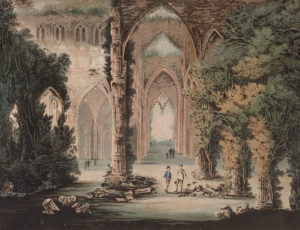 The Grand West Entrance of Tintern Abbey circa 1815, Frederick Calvert
The Grand West Entrance of Tintern Abbey circa 1815, Frederick Calvert
‘Amidst the gloom arose the ruins of the abbey, tinged with a bright ray, which discovered a profusion of rich Gothic workmanship; and exhibited in pleasing contrast the grey stone, of which the ruins are composed, with the feathering foliage, that floated around them: but we had not time to examine how all these beauteous parts were formed into a whole – the imagination formed it, after the vision vanished.’
William Gilpin ‘Observations on the River Wye’ 1770
Throughout the next fifty years the romantic image of the location prospered alongside industry. As a pioneering manufacturing site, the Wye attracted those seeking the sublime – industrial as well as bucolic.
There is something awe-inspiring about blast furnaces at night and Tintern operated around the clock. Industry is only alluded to in the poetry and paintings of the time. One of Wordsworth’s most famous poems ‘Lines written a few miles above Tintern Abbey..’ (1798) reflects on a visit five years earlier and how his perception of nature has matured since. Some contend that he ignored the manufacturing and the poverty but there are hints in the lines ‘wreathes of smoke sent up in silence from among the trees’ and ‘vagrant dwellers in the houseless woods’. By 1828 the furnaces had gone – Tintern’s charcoal fuelled iron making was obsolete.
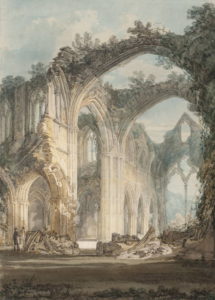 Tintern Abbey: The Crossing and Chancel, Looking towards the East Window by J.M.W. Turner 1794. Turner’s background as architectural draughtsman is evident in this work originally sketched in 1792 when, aged seventeen, he made a tour of South Wales to gather material for a series of picturesque views.
Tintern Abbey: The Crossing and Chancel, Looking towards the East Window by J.M.W. Turner 1794. Turner’s background as architectural draughtsman is evident in this work originally sketched in 1792 when, aged seventeen, he made a tour of South Wales to gather material for a series of picturesque views.
The railway arrived in the Wye Valley in 1876 and a large station was built at Tintern to cope with the influx of tourists. In 1901, now considered a monument of national importance, the state acquired it for £15,000. The Office of Works assumed guardianship in 1914. Preservation and display were their fundamental tenets. Previously the fragile south wall of the Nave had been condemned but the Office of Works chose to carry out major repairs. Ivy was an anathema to the new owners as it concealed architectural detail and potentially damaged already delicate structures. Too much vegetation also gave the impression of custodial carelessness.
The Society for the Preservation of Ancient Buildings (SPAB) took exception to the restoration of the Abbey. Writing in 1922 the Society’s secretary Albert Powys complained that the building was ‘no longer a thing of mystery’ and that ‘stripped of its foliage the deep shadows of its recesses disappear’. The observer no longer sensed ‘awe and wonder’. In general, the romantics criticised the condition of the state’s acquisitions asserting that they ‘had not only been preserved but sterilised’. Some mourned the end of the ‘progressive’ ruin now replaced by the ‘static’ ruin.
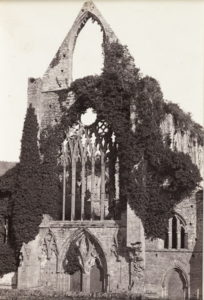 West Front of the church with its elaborate fourteenth century tracery and ivy, c. 1880.
West Front of the church with its elaborate fourteenth century tracery and ivy, c. 1880.
Those who favoured the retention of ivy or opposed radical repair were thought selfish – whilst they could admire the ruins aesthetic qualities the consequent damage could deny future generations any opportunity to witness the building at all. Recent studies are more sympathetic to ivy as it can help protect walls from temperature extremes. So rather than being ‘eradicated’ retaining ivy should be ‘considered’.
Today run by Cadw, seventy thousand people a year flock to Wordsworth’s ‘wild secluded scene’.
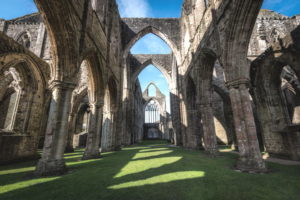 Tintern Abbey Church looking west, highlighting the Office of Works ethos of preservation and display still upheld by Cadw. Vegetation-free ruins are presented above neatly trimmed lawns enabling ease of access for the public.
Tintern Abbey Church looking west, highlighting the Office of Works ethos of preservation and display still upheld by Cadw. Vegetation-free ruins are presented above neatly trimmed lawns enabling ease of access for the public.
By Richard Taylor. I have had a lifelong interest in monasteries and have visited many across the UK and Europe. I have no formal qualification in history (my degree is in Aerospace Engineering) although I have completed various Art History courses on-line through Oxford University Continuing Education. I live near Manchester in England.
Published: July 25th, 2021.
